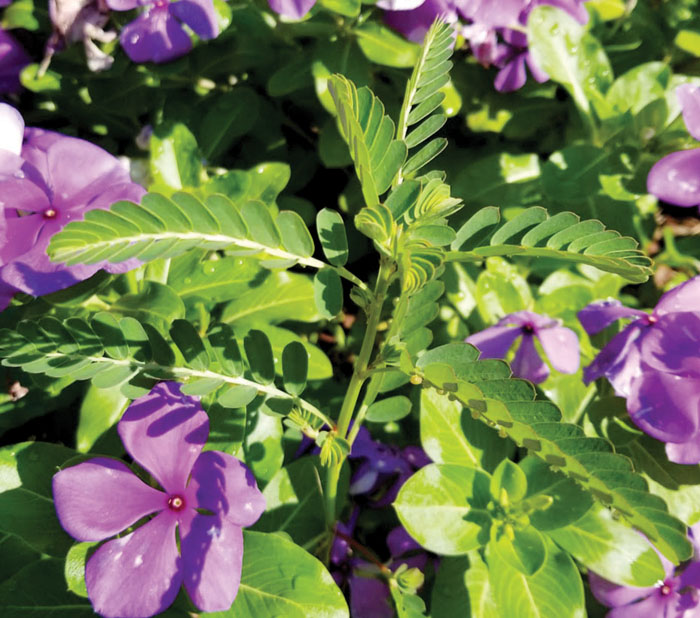Darrell Blackwelder: Controlling noxious weed chamberbitter can be tough
Published 12:00 am Saturday, August 13, 2022

- Mimosa weed in bedding plants.
There is a relatively new lawn and flower bed weed that has become a royal pain for many home gardeners. The aggravating weed which appears during mid-summer is chamberbitter(Phyllanthus urinaria); also known as gripeweed, leaf flower or little mimosa. The weed reminds me of a lady who told me she never had weeds until her new neighbor, an avid gardener moved in a couple of months before. She was right in one aspect, as gardeners are a major source of distributing noxious weeds. Even though weeds are also spread by animals, windy weather conditions and water, pesky weeds can arrive to different locations in container plants, mulch, cattle feed and hay. Weed seeds can even be transported by shoes and clothing gathered inadvertently while visiting other countries.
Chamberbitter is a warm season annual that has emerged in our area over the past few years. The plant grows widely in South America and Asia where it is used as an herbal remedy for kidney stones. Alabama is inundated with the plant which is now on the list of noxious weeds. Chamberbitter is difficult to control for several reasons. It is tough, grows very fast, has an extensive root system and is drought tolerant. After germination it produces flowers and copious quantities of viable seeds. The flowers produce minute capsules that literally explode, spreading seeds in many directions away from the plant. The weed can be controlled with broadleaf weed killers for cool-season turf, but you need to be persistent with these applications. Go to https://hgic.clemson.edu/factsheet/chamberbitter/ for more detailed information.
Darrell Blackwelder is the retired horticulture agent and director with the North Carolina Cooperative Extension Service in Rowan County. Contact him at deblackw@ncsu.edu.



